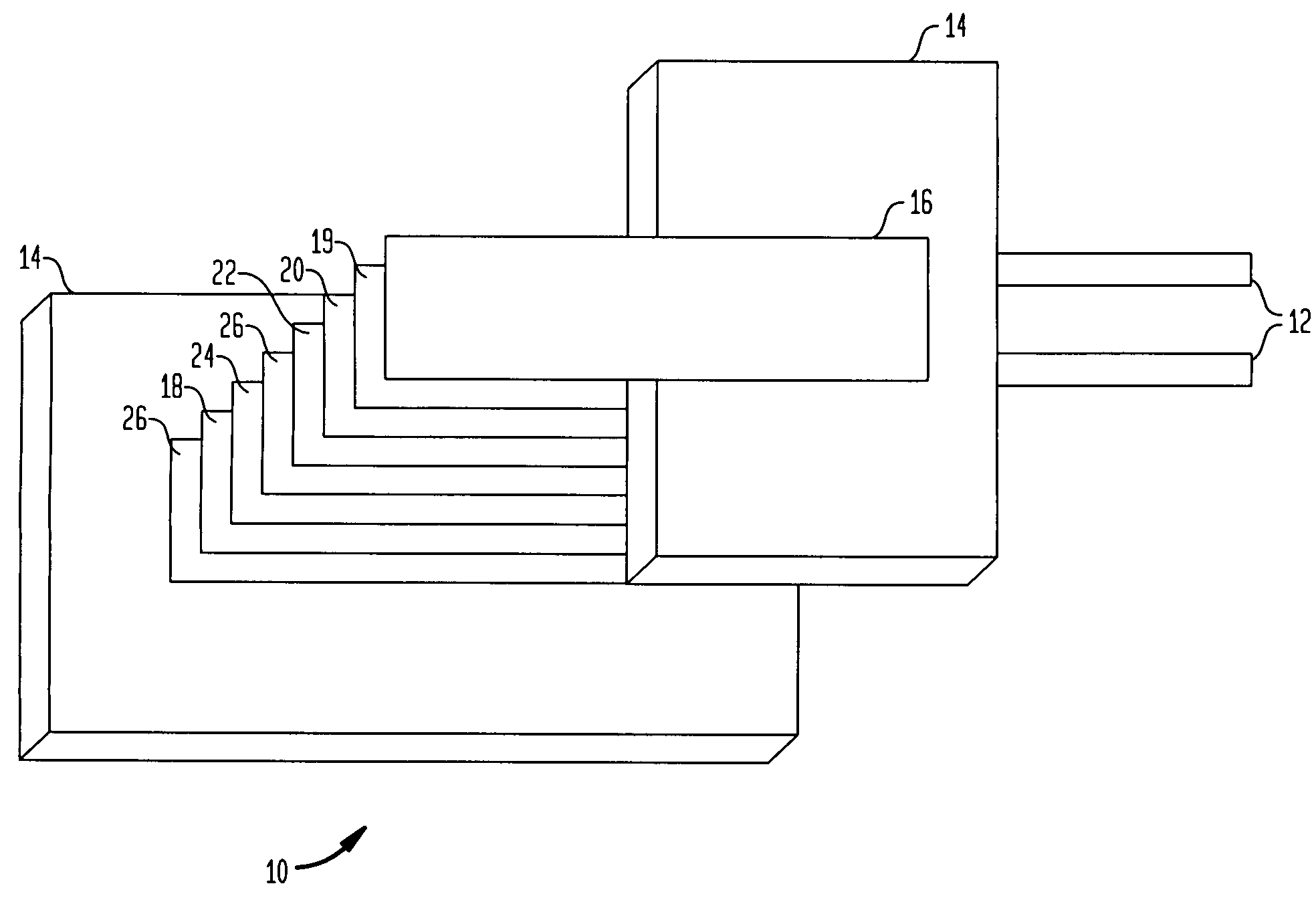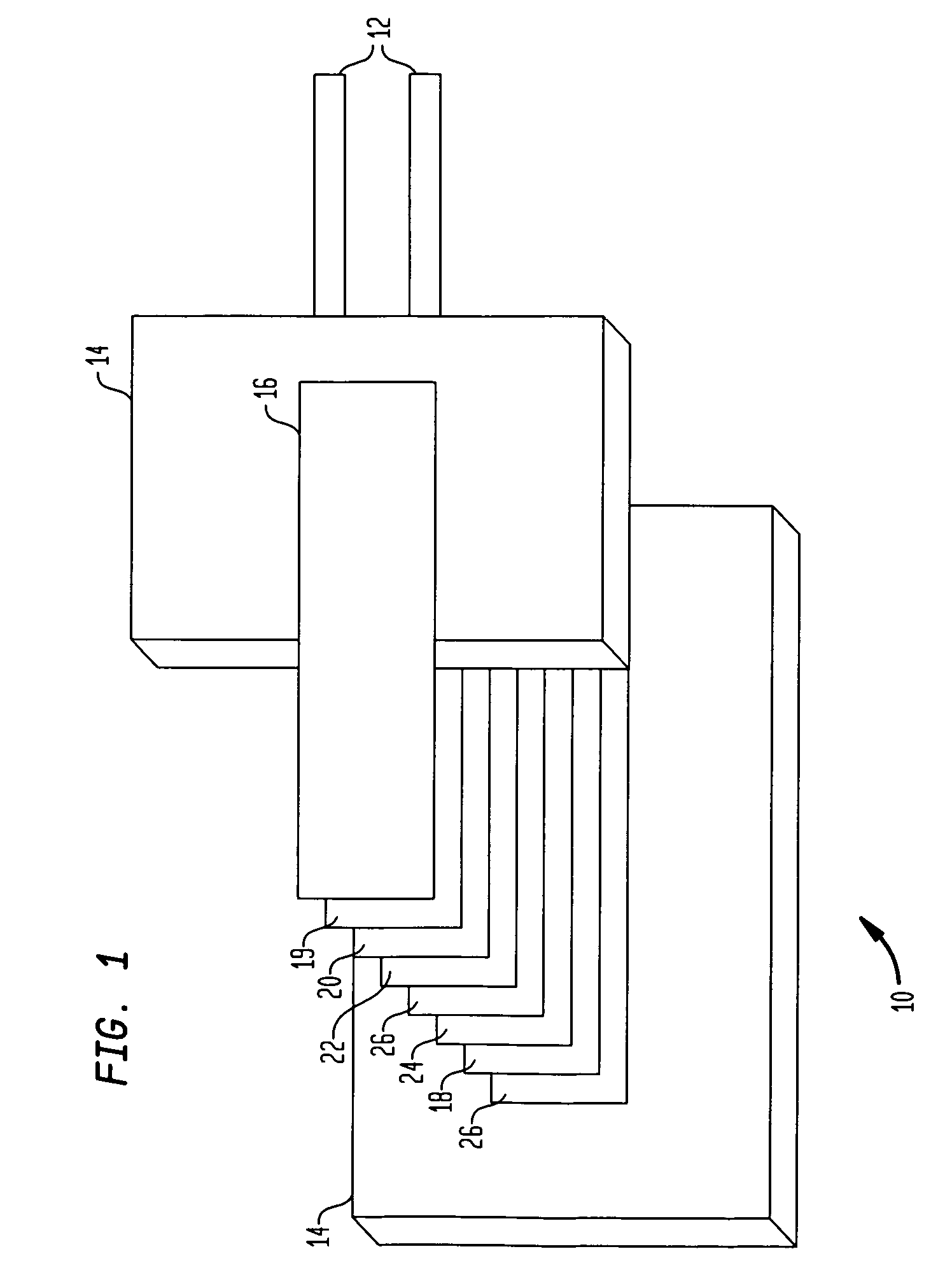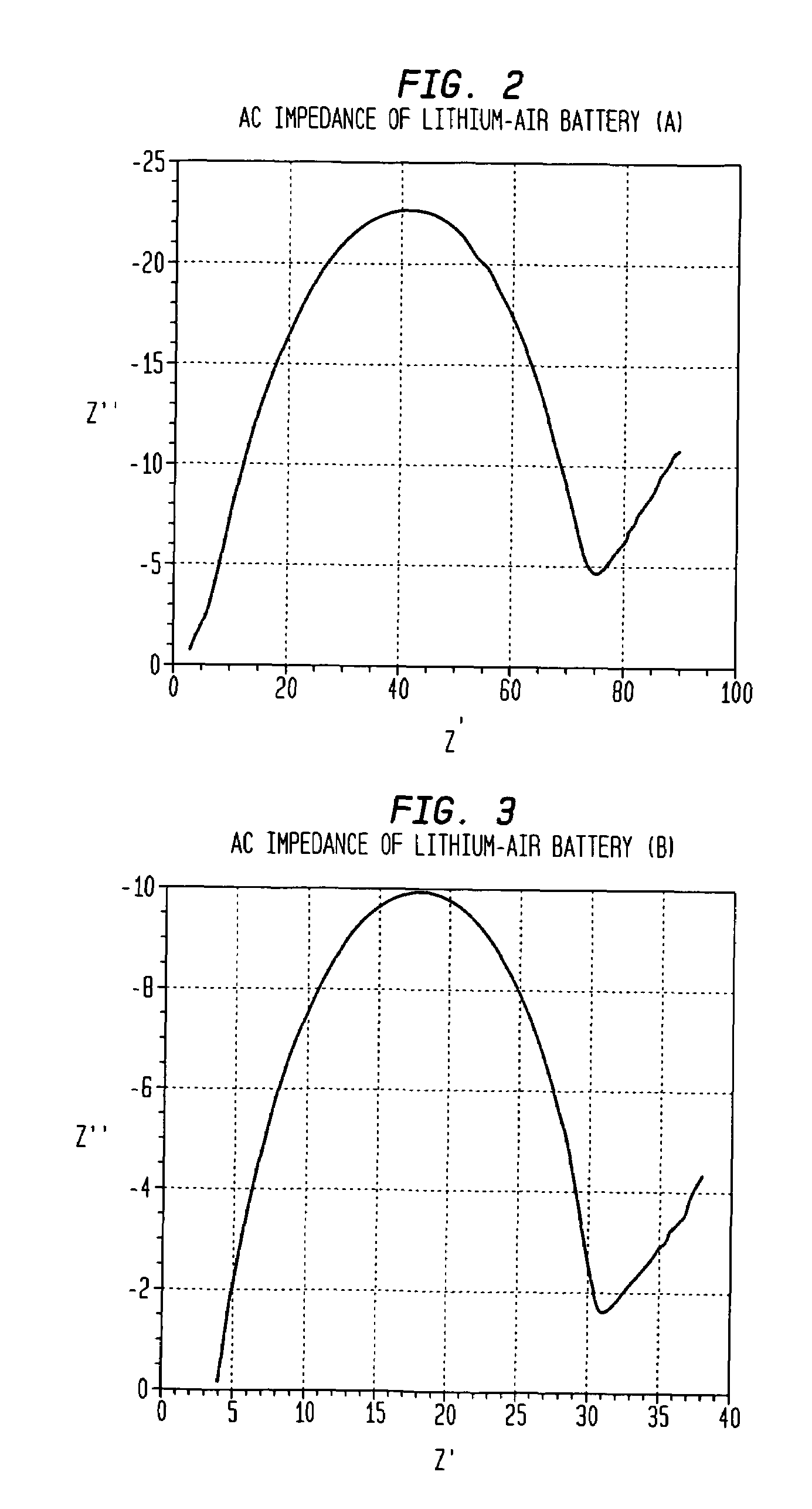Alkali-hydroxide modified poly-vinylidene fluoride/polyethylene oxide lithium-air battery
a lithium-air battery and polyethylene oxide technology, applied in the field of electrochemical power sources, can solve the problems of lithium oxidation violently, metal-air batteries, and incompatibility of metals with air moisture, and achieve the effect of reducing the passage of moistur
- Summary
- Abstract
- Description
- Claims
- Application Information
AI Technical Summary
Benefits of technology
Problems solved by technology
Method used
Image
Examples
example i
[0024]A polyvinylidene fluoride (pVdF) was obtained from the Polyscience Corporation of Warrington, Pa. and Lithium hydroxide, a 98% solution, was obtained from Alfa Aesar Corporation of Ward Hill, Mass. Five grams of pVdF was placed into a 50 mL centrifuge tube. Thereafter, a three molar solution of lithium hydroxide was poured into the centrifuge tube until it reached the 50 mL line. The mixture was shaken and left for at least 24 hours. After 24 hours, the mixture turned from a white color to a pinkish color. More solid lithium hydroxide was put into the mixture to increase the degree of reaction. The mixture was shaken and left alone for another 24 hours. This process was repeated until a dark brown paste settled to the bottom of the centrifuge tube. At this point, the mixture was placed in a centrifuge for 10 minutes at 8000 rpm to separate the brown paste from the pinkish pVdF that floated on the top of the mixture. The brown paste was then removed and placed into an extractio...
example ii
[0031]A metal air battery (A) was prepared according to Example I excepting that a barrier layer to protect a lithium foil instead comprised, in weight percent, 81% modified pVdF, 9% PEO and 10% lithium hexafluorophosphate. The lithium foil had a weight of 0.0214 g an area of 3.27 cm2. The metal-air battery (A), as prepared, was discharged at 2 mA to 1.5 volts and was found to have a capacity of 15 mA.
[0032]Referring now to FIG. 2, a plot showing the results of testing of the metal air battery (A) of Example II for AC impedance is provided. In this example, the metal air battery had an overall real impedance of 90 ohms, which, as is known, is an important measure of the rate capability of the metal-air battery (A).
[0033]Referring now to FIG. 4, a plot showing the results of testing of the metal air battery (A) for both discharge current and voltage as related to time. This metal air battery maintained a discharge voltage of 2.6 volts over approximately 7.5 hours while providing appr...
example iii
[0034]A metal-air battery (B) was prepared according to Example I excepting that a barrier layer to protect a lithium foil instead comprised, in weight percent, 78% modified pVdF, 10% PEO and 12% lithium hexafluorophosphate. The lithium foil had a weight of 0.0227 g an area of 3.17 cm2. The metal-air battery (B) was discharged at 3 mA to 1.5 volts and was found to have a capacity of 16.8 mA.
[0035]Referring now to FIG. 3, a plot showing the results of testing of the metal air battery (B) of Example III for AC impedance is provided. In this example, the metal air battery had an overall real impedance of 37 ohms.
[0036]Referring now to FIG. 5, a plot showing the results of testing of the metal air battery of Example III for both discharge current and voltage as related to time. This metal air battery maintained a discharge voltage of 2.5 volts over approximately 5.6 hours while providing approximately 3 mA of current.
PUM
 Login to View More
Login to View More Abstract
Description
Claims
Application Information
 Login to View More
Login to View More - R&D
- Intellectual Property
- Life Sciences
- Materials
- Tech Scout
- Unparalleled Data Quality
- Higher Quality Content
- 60% Fewer Hallucinations
Browse by: Latest US Patents, China's latest patents, Technical Efficacy Thesaurus, Application Domain, Technology Topic, Popular Technical Reports.
© 2025 PatSnap. All rights reserved.Legal|Privacy policy|Modern Slavery Act Transparency Statement|Sitemap|About US| Contact US: help@patsnap.com



